Menus
- See enough? Impossible!
- Gilera Saturno 500 for 11,500 marks
- The driving pleasure grows with every kilometer
- Thomas Schulze
- Technology and engine
- Largely problem-free, stable engine
- An engine for the whole family
- Technical specifications
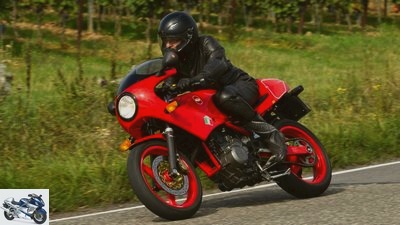
Rivas


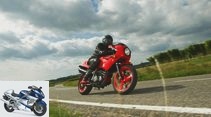
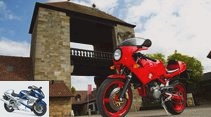
33 photos
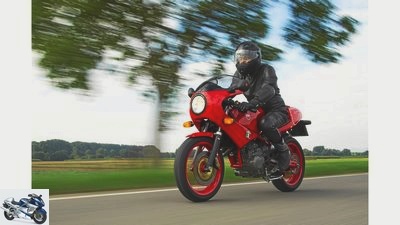
Rivas
1/33
It is as rare as it is seldom beautiful, the Gilera Saturno 500.

Rivas
2/33
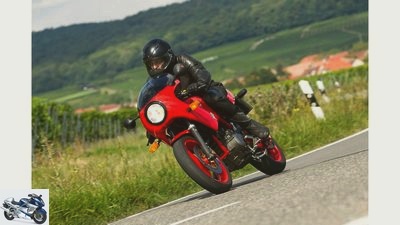
Rivas
3/33

Rivas
4/33
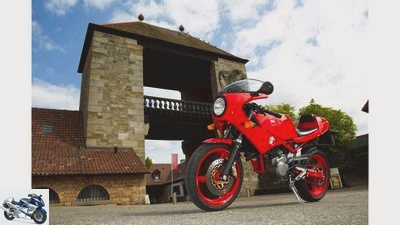
Rivas
5/33
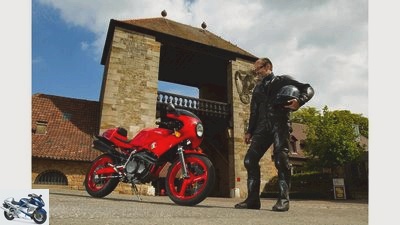
Rivas
6/33
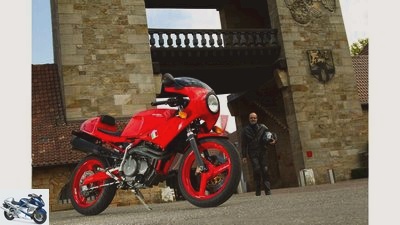
Rivas
7/33

Rivas
8/33

Rivas
9/33
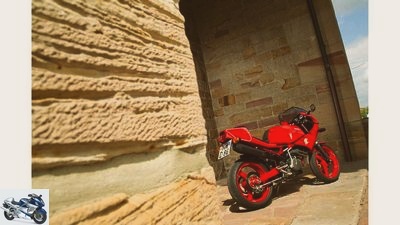
Rivas
10/33
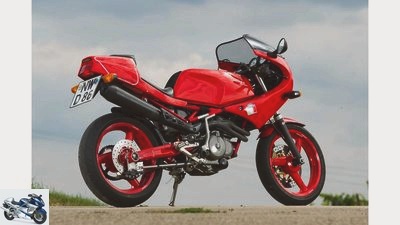
Rivas
11/33

Rivas
12/33
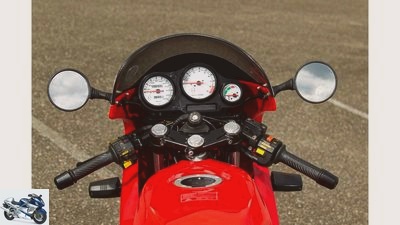
Rivas
13/33
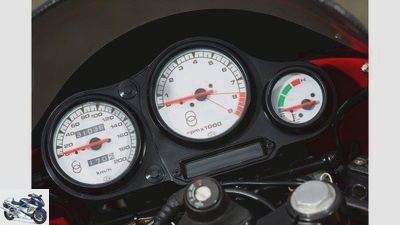
Rivas
14/33
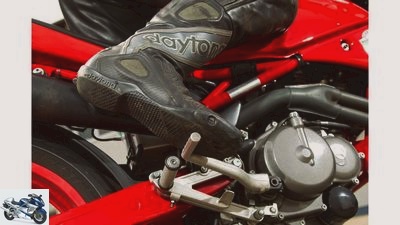
Rivas
15/33
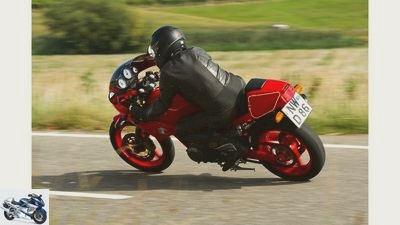
Rivas
16/33
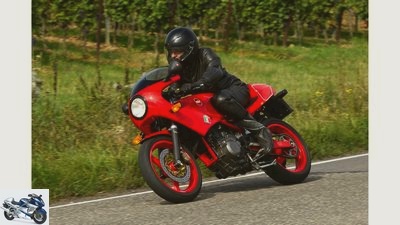
Rivas
17/33
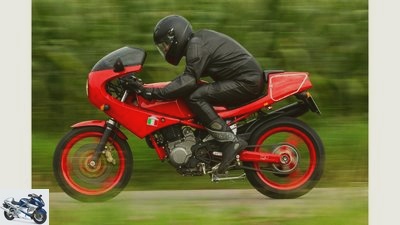
Rivas
18/33
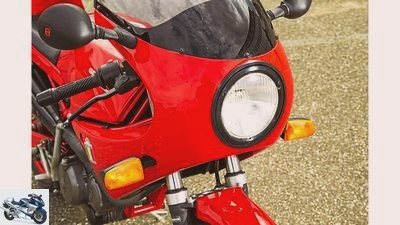
Rivas
19/33
Timelessly beautiful: classically styled half-shell cladding with flush integrated round headlights.

Rivas
20/33
Convenient: In addition to the kick starter, the Gilera can also be brought to life at the push of a button.
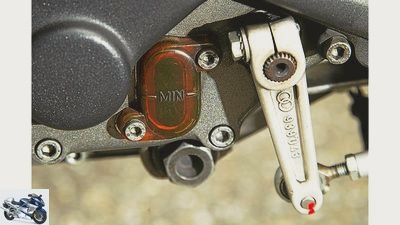
Rivas
21/33
Better safe than sorry: oil level check via sight glass. Tom has secured the screws of the shift linkage with Loctite.

Rivas
22/33
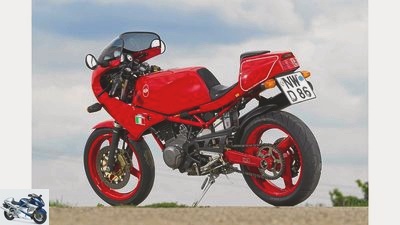
Rivas
23/33
Price 1989: 11,500 marks.
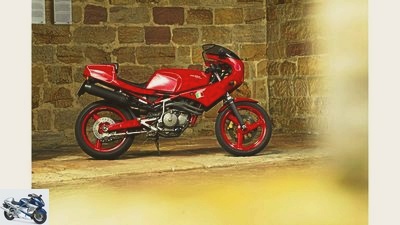
Rivas
24/33
At Saturno, race and elegance merge into a total work of art.
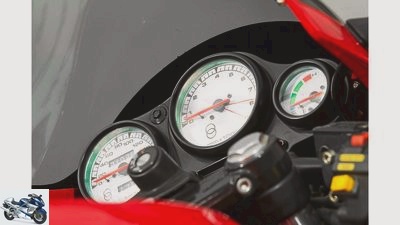
Rivas
25/33
Nice to look at: the clearly designed cockpit is pleasing with its clear instruments and white dials.
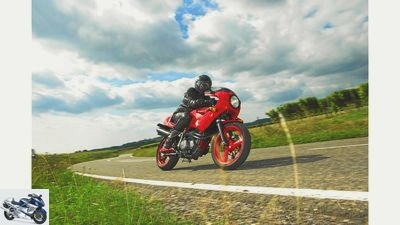
Rivas
26/33
Parade discipline: the lightweight Gilera Saturno 500 is in its element on winding country roads.
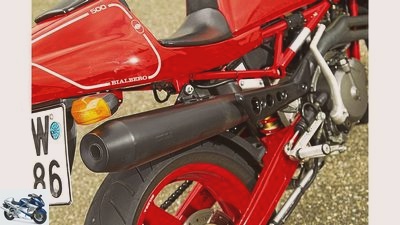
Rivas
27/33
Sound body: The Lafranconi bag emits a powerful, but never intrusive rumble.
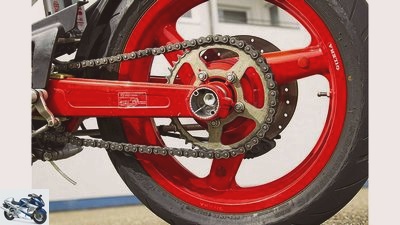
Rivas
28/33
Swing arm made of sheet metal profiles with eccentric mount.
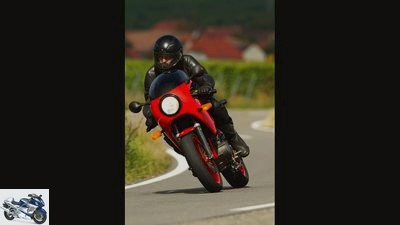
Rivas
29/33
Curve hunter: With the correct suspension setting, the handy Saturno whizzes through the radii with pinpoint accuracy.

Rivas
30/33
Even after 23 years, Thomas Schulze is still totally fascinated by the Saturno.
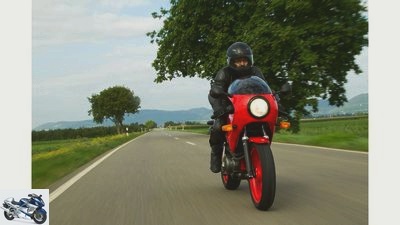
Rivas
31/33
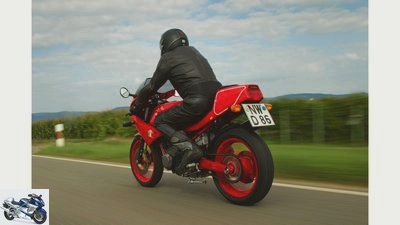
Rivas
32/33
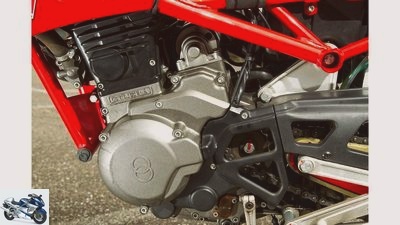
Rivas
33/33
Driving report Gilera Saturno 500
See enough? Impossible!
Content of
The Gilera Saturno 500 is as rare as it is beautiful. For Thomas Schulze it was love at first sight. He has been loyal to the petite Italian for 23 years.
Perfect motorcycles don’t necessarily have to be particularly strong, agile, reliable or functional. It is enough if they meet us where reason has no chance, namely directly into the heart. They are motorbikes that play with our emotions, rob us of sleep at night and let us dream during the day. Motorcycles on which even old hands find themselves inventing a thousand reasons for going to the garage because they can’t get enough of the machine. Thomas “Tom” Schulze from Neustadt an der Weinstrasse has also known this tingly longing, one since home Gilera Saturno 500 is parked.
Buy complete article
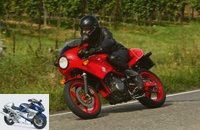
Driving report Gilera Saturno 500
See enough? Impossible!
Two years of persuasion
Even after the first MOTORRAD driving report in 1988, he was addicted to the slim beauty. The seductive red, the beautiful shapes, this wonderful tubular space frame – it had to have the Saturno. Or rather, his wife Dagmar, who with her petite stature would fit perfectly on the graceful Gilera Saturno 500. Thought, no hoped, the passionate Guzzi driver.
Rivas
Race and elegance merge with the Gilera Saturno 500 to create a total work of art.
But Dagmar wasn’t nearly as enthusiastic as her husband – the handlebars were too low, the posture too sporty. Two years of persuasion and the positive experience of a Gilera pilot friend finally dispelled Dagmar’s concerns, and in the spring of 1990 Tom’s longed-for Gilera Saturno 500 was actually on the doorstep, bought new for a hefty 11,000 marks. But both have never regretted this investment, Dagmar immediately got along very well with the 500.
There are now 31,000 trouble-free kilometers on the clock of the well-maintained Gilera Saturno 500, a good half of which is Tom’s account. “The lightweight is just perfect for day trips on winding Palatinate country roads, compared to my Guzzi Le Mans or the 750 S it is almost a relaxation”, Tom is always looking forward to the Italo single. That Japanese stylists had a hand in it doesn’t change his continued admiration for the Gilera. Why should it? After all, the Japanese must have absorbed quite a bit of Italian red wine and even more of the Italian mentality before they got down to business.
With their straightforward, classic style, which forms a harmonious unit with the modern line, the designers didn’t just hit the nerve of Japanese bikers, who were actually thirsting for European motorcycles at the end of the 1980s. Gilera has sold over 1000 of the Saturno 500 to Nippon alone.
Gilera Saturno 500 for 11,500 marks
In this country there were far fewer. With a list price of 11,500 marks, the 38 hp single-cylinder sports car even surpassed the significantly more potent four-cylinder Japanese engine, which made the Saturno a niche product for around 240 solvent enthusiasts in performance-spoiled Germany. However, like Tom and his wife, they should really enjoy the lively nature of the Gilera Saturno 500. On the one hand, because the prices for well-kept copies easily reach the cost price at the time. On the other hand, because of its demanding character, which makes driving a very special, intense experience. Because the Gilera Saturno 500 doesn’t make it as light as the 167 kilograms suggest, Tom knows. “Well, drive then,” he asks me with a meaningful grin.
Rivas
Curve hunter: With the correct suspension setting, the handy Saturno whizzes through the radii with pinpoint accuracy
All it takes is a push of the button and the half-liter stew roars with a full blow while I try to accommodate my 189 centimeters on the delicate Gilera Saturno 500. High notches and a moderate seat height result in an acute knee angle, and the low handlebar stubs pull the upper body nicely over the elongated, slim tank.
Let’s get out of town, because the Gilera Saturno 500 is not at all suitable for leisurely cruising. Not only the sporty seating position speaks against this, but also the extremely rough nature of the Gilera single in the lower speed range, which had to endure a few changes compared to the larger enduro sisters in the Saturno. The water-cooled dohc four-valve engine, which is load-bearing in the tubular space frame open at the bottom, listlessly hooks onto the chain under 3000 tours, it only runs smoothly from 3500 rpm. In gears four and five, the well-damped needle on the tachometer should even be at the 4000 mark before the throttle valve of the 40-series Dellorto is turned on.
The driving pleasure grows with every kilometer
What is still strenuous in town is no longer an issue on the small Palatinate country roads, which are easy to drive. Here, the easy-revving single can easily be kept in its comfort zone with the precise five-speed gearbox, which shifts over slightly longer distances. According to the tour counter, this reaches just under the 8000 mark, but I don’t want to squeeze the half-liter engine that far because it tingles strongly in the handlebars and pegs at over 5000 rpm, and the uniform power output towards the Redline does not provide any additional thrust. So the ride on the Gilera Saturno 500 somehow reminds me of constant give and take, whereby the pilot has the advantages on his side when he chases the single between 4000 and 7000 tours through the Winkelwerk, acoustically accompanied by the pithy banging and the hammering Intake staccato.
With every kilometer more driving fun grows, our cooperation works better. But I have to work for this harmony, because the track-stable and fundamentally very curvy chassis also has its peculiarities. Reacting very spontaneously to even the smallest steering commands, the Saturno is only hesitant when it folds into deeper lean angles and looks a bit stiff. In addition to the rather worn rear tire, this is mainly due to the fact that I weigh a little more than the permitted 87 kilograms – and thus almost double that of Dagmar, to which the sensitive, springy, surprisingly comfortable chassis is tuned – a matter of habit.
Still, the little red skin grabbed me. Now that things are going well for us, I’ll treat myself to a few detours on the way back. And the Saturno in mind a few strokes. New tires would look great on her, as well as a firmer shock absorber, and maybe a steel-braided brake line … So it gets really late before I’m back in front of Tom’s garage. But he’s completely relaxed. Because he knows exactly how perfectly the Gilera Saturno 500 masters the art of seduction.
Thomas Schulze
Rivas
Thomas Schulze about the Gilera Saturno 500.
"Even after 23 years I am totally fascinated by the Gilera Saturno 500. I think your timeless, classic style is absolutely successful, and I also like that the Gilera is not on every street corner. Ours is an Italian version that is said to have a little more steam. In terms of performance, I don’t miss anything on narrow country roads, where I enjoy the playful handling and the robust sound. I was positively surprised by the reliability and workmanship, apart from a few loose screws there have been no problems at all."
Technology and engine
Rivas
Price in 1989: 11,500 marks.
In the mid-1980s, the Piaggio Group breathed life back into its subsidiary Gilera, which had belonged to it since 1969: after decades, the Italians again built a large-displacement four-stroke model family around a newly developed single-cylinder. It all started with the off-road-oriented Dakota 350 for the domestic market, which was gradually followed by further 600 models for export.
The water-cooled four-valve engine also works in the Gilera Saturno 500 presented in 1988, but with a bore reduced from 99 to 92 millimeters and a stroke of 74 millimeters. Instead of the register carburetors installed in the 600 series, a 40 series Dellorto carburetor with an accelerator pump takes care of the mixture preparation in the street stew. In addition, the Saturno has to get along without the counterbalance shaft that is installed in the larger enduro models and rotates in the opposite direction to the crankshaft. Nevertheless, the half-liter stew was a technical delicacy among classic street singles back then.
Largely problem-free, stable engine
With its cooling water jacket, two overhead camshafts driven by toothed belts, which control the four valves via adjustable rocker arms, and the slide-bearing crank drive, the largely problem-free and stable engine in series production had enough arguments to convince even skeptics. For example, after dismantling the toothed belt (special tools required!) And four nuts, the complete cylinder head including the valve train can be removed.
The single is started either by pushing a button or by kick starter, with an automatic valve lifter making work easier. The engine is carried in the beautifully welded tubular space frame, the complete rear suspension of which with central spring strut, deflection levers and swing arm is bolted to two forged aluminum plates as a special feature.
An engine for the whole family
XRT 600: Paris-Dakar was on everyone’s lips, Gilera didn’t want to stand back: the XRT from 1989 with 47 hp, beak and a large tank (8,995 marks)
RC 600 / C: Light, suitable for off-road use and with unmistakable borrowings from Honda’s Dominator – this is how the sporty offshoot presented itself in 1989 (9,950 marks)
RC 600 R: Puristic and straightforward, the enduro version, which has a nominal 53 hp, was prepared for rough mud battles in 1992
Saturno Piuma: Grand Prix technology for the popular SoS racing series – but for 28,500 marks the exclusive racer had a few weaknesses too many
Northwest: As peculiar as the name was this model in 1991, with which Gilera conjured the first series supermoto out of the hat (10,500 marks)
Forums / specialists
Volker Heim (www.heimracing.eu) takes care of the Gilera four-stroke single cylinder, information, links and help are available at www.gileraclub.de.
Technical specifications
Engine: Liquid-cooled single-cylinder four-stroke engine, two overhead camshafts driven by toothed belts, four valves per cylinder, operated by rocker arms, displacement 491 cm³, output 28 kW (38 HP) at 7000 rpm
Power transmission: Multi-disc oil bath clutch, five-speed gearbox, chain drive
Landing gear: Steel tubular frame open at the bottom, telescopic fork at the front, Ø 40 mm, two-arm swing arm made of sheet steel profiles, central spring strut, cast aluminum wheels, tires 110 / 70-17 front, 140 / 70-17 rear, front disc brake, Ø 300 mm, four-piston caliper, rear disc brake, Ø 240 mm
Mass and weight: Wheelbase 1410 mm, weight 167 kg with a full tank
Vmax: 176 km / h
Related articles
-
Rivas 6 pictures Rivas 1/6 When the street single cylinders celebrated their rebirth in the 1980s, the most beautiful interpretation came from Italy. The…
-
Aprilia RS 660 in the driving report
New items 2020 top topic Aprilia (Alberto Cervetti). 17 pictures Aprilia (Alberto Cervetti). 1/17 When the new Aprilia RS 660 was first presented …
-
Driving report Harley-Davidson Dyna Super Glide Sport Big Bore
Driving report Harley-Davidson Dyna Super Glide Sport Big Bore The pure emptiness If you look into the muffler of this special Dyna Glide, you won’t find…
-
Driving report KTM 690 Duke and KTM 690 Duke R
KTM 19 pictures KTM 1/19 One thing you have to give the KTM model planners: their feeling for filling niches with perfectly fitting models. Good example: the Duke …
-
Driving report Metisse 8V Mark 5
Nakamura driving report Metisse 8V Mark 5 Twin-Shock Shocking! A Rickman Metisse all in green, with a tubular steel frame and two spring struts – but with a new …
-
Driving report Suzuki TL 1000 R
Driving report Suzuki TL 1000 R On probation With the super sporty TL 1000 R, Suzuki wants to prove that despite massive starting difficulties with the TL …
-
Driving report Triumph Thunderbird with Big-Bore-Kit
Triumph 11 pictures Triumph 1/11 Triumph Thunderbird Triumph 2/11 Triumph Thunderbird Triumph 3/11 Triumph Thunderbird Triumph 4/11 Triumph Thunderbird …
-
Archive pictures Aprilia RSV mille SP and the driving report from MOTORRAD 17-1999
markus-jahn.com 15 pictures markus-jahn.com 1/15 In fact, the engine of the Aprilia RSV mille SP has been thoroughly modified. All around were found …
-
BMW F 800 R in the driving report
BMW 21 pictures BMW 1/21 The new BMW F 800 R in white / blue … BMW 2/21 BMW F 800 R. BMW 3/21 BMW F 800 R. BMW 4/21 BMW F 800 R. BMW 5 / 21 BMW F 800 R. BMW …
-
Kawasaki Z 900 in the driving report
Kawasaki 17 pictures Kawasaki 1/17 Kawasaki Z 900 Kawasaki 2/17 Dipped in bright green, the new tubular steel lattice frame takes the engine as a supporting …